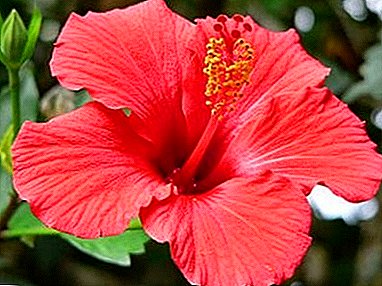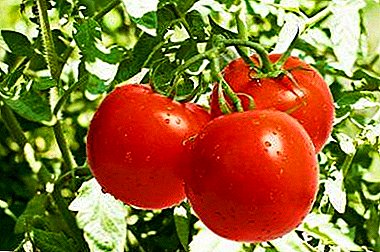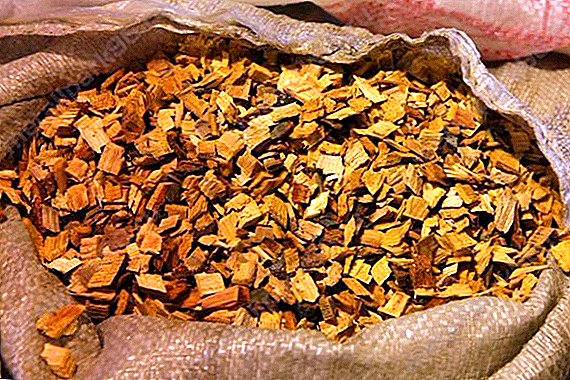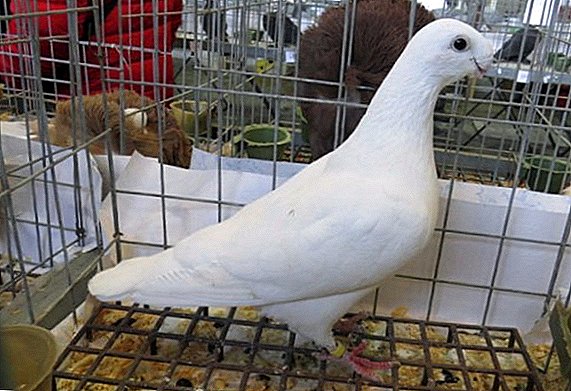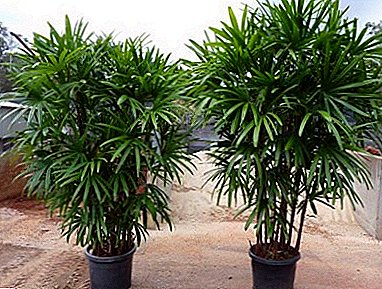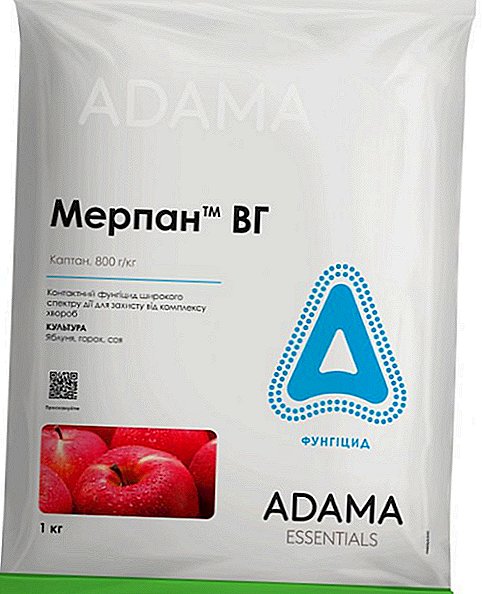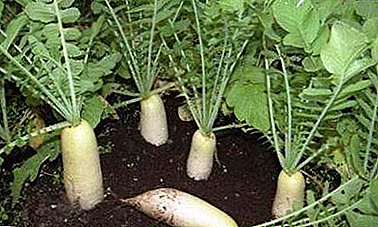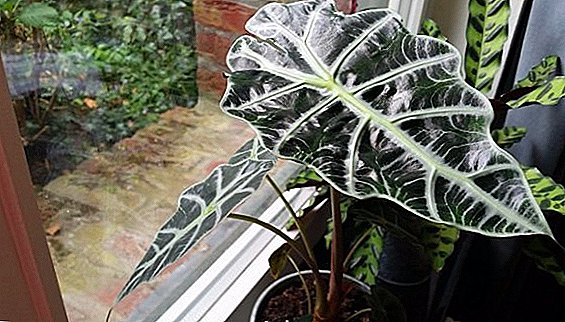 Alocasia is a rare but popular tropical plant in room culture.
Alocasia is a rare but popular tropical plant in room culture.
It has dense leaves that repeat the shape of the heart, which are the main decoration of the plant.
In another way, this flower is called trefoil or elephant ear.
We create optimal conditions in the house for a flower from the tropics
Growing alokaziya at home is not at all such an impossible task. It is necessary to observe some rules, create suitable conditions for the plant and enjoy the view of a beautiful ornamental plant.  With all its beauty, alokaziya is a poisonous plant, therefore, caring for it, you should observe safety rulesbesides keep her away from children and animals. Like all tropical representatives of the flora, alokaziya prefers a fertile, humus-rich substrate, increased air humidity and an appropriate temperature regime.
With all its beauty, alokaziya is a poisonous plant, therefore, caring for it, you should observe safety rulesbesides keep her away from children and animals. Like all tropical representatives of the flora, alokaziya prefers a fertile, humus-rich substrate, increased air humidity and an appropriate temperature regime.
Did you know? Alocasia growing in nature during rainy periods cannot absorb all the water entering the soil. Its excess plant secretes through the leaves in the form of drops. Homemade varieties also have this ability, thanks to which it is believed that alokaziya predicts rain.
Lighting Requirements
In the summer she needs a bright sun, however direct rays are undesirabletherefore, it is better to locate it on the east or west, but not the south window sill - it will destroy the leaves of the plant. If there are no other options, you need to priten the flower or put it away from the window.
Strong shading, like excessive sunlight, will cause problems with the leaves, which can become uneven in color, which will affect the decorative effect, or burn spots on the leaves of alokaziya can occur.
Did you know? Varieties of alokazii, having a uniform color of leaves, tolerate shading more easily.
In winter, when the daylight hours are shortened, for Alokazia, it is desirable to extend it with the help of the backlight up to 12 hours. 
Temperature requirements
Alocasia, although of tropical origin, feels good at room temperature in the region 22-26 degrees. In the summer, she is good on the street if the place is suitable and meets the conditions of detention. By the way, it does not tolerate drafts, so it is necessary to provide protection from them both on the street and at home.
Summer holidays on the street are well reflected in the appearance of the flower, it is likely that she likes the open air humidity more than at home.
If you send Alokaziya "on vacation", then you need to return it to your house in August, when the outdoor and room temperature coincides. Upon the return of alokazii, quarantine is necessary.
In the cold season, alokaziyu should be at a temperature not lower than 17 degrees.
Home Alokazia Care Tips
To care for alokazii need to adapt, considering all factors:
- temperature;
- lighting;
- plant size.
Important! For all tropical plants, the principle of irrigation when drying the top layer of soil by 3 centimeters is equally true.
How to conduct watering
As already mentioned, watering the plant requires moderate, as the soil dries. Categorically cannot be allowed stagnant water in the pot and pan. Also, do not allow the land to dry in a pot. If alokaziya fades or leaves dry, it indicates insufficient watering or moistening.  In the summer, the need for watering usually occurs once every two days; in the winter, once or twice a week.
In the summer, the need for watering usually occurs once every two days; in the winter, once or twice a week.
Important! Alocasia from time to time needs hygienic procedures: care is to wash the plant in the shower as needed, covering the ground with cellophane, then wipe the leaves to avoid unaesthetic stains.
Water for irrigation needs soft and defended.
What is the humidity of the flower loves
Coming from the tropics, the flower needs high humidity, so it must be sprayed twice, and even three times a week, and in the summer - at least every day.
If the conditions of detention differ by dryness, an additional measure is to place the pot on a pallet with moistened pebbles or expanded clay. You can not neglect the maintenance humid environment - this is fraught with ticks.
When to feed
Having transplanted the plant and letting it adapt, in a month it is necessary to start feeding it. For this, mineral fertilizers diluted to low concentrations are used.
If you want to feed organic nitrogen-containing fertilizers, you need to do this with great care: overdose is dangerous rotting parts of the plant. Not having much experience, it is advisable to use only mineral dressing.
It is good to alternate watering and foliar feeding with the same solution. Complex mineral formulations for soil fertilizer need not be diluted, 5-7 pellets after irrigation can be put on the soil surface. Gradually, they will, fertilizing with watering, fertilize it.
If you are a lover of tropical exotic in the house, pay attention to plants with decorative leaves: asplenium, nephrolepis, marantha, peperomia, platicerium, philodendron, yucca.
All the details of transplanting: which substrate and pot to pick up
Alocasia loves nutritious soil, the substrate should have a slightly acid reaction, it is good to pass air and moisture. The rate of transplantation is once a year; adult copies can be transplanted once every two years. Transplantation is carried out in early spring, when alokaziya left the state of rest, after buying a new copy, it should first be placed in quarantine.  Soil composition:
Soil composition:
- leaf earth - 1 part;
- coniferous land - 1 part;
- peat land - 1 part;
- sand - 0.5 parts.
Pots Alokaziya loves high, equipped with large drainage holes.
Large plants can be transplanted by transshipment with an earthy clod in a container having a larger diameter.
Strongly ramming the pot in the ground is not worth it, it will later settle itself when watering, after which you can add more land from above. The soil in the pot is supposed to be loose.
Important! In order to transplant an adult plant with a division, at the end of the rest period, in March, one or two weeks before transplantation, fertilizing is done.
Breeding methods
The owners of an adult plant are interested in the question of how to propagate alokaziya.
Such an instance is breeding material one of following ways:
- division of rhizomes;
- using daughter tubers;
- grafting;
- seeds.
Important! To speed up the process, you should use a heated earth and breathable litter consisting of peat, perlite, peat moss and sand. Humidity, heat and breathability are optimal conditions for the development of the root system.
Division of rhizomes
This method is combined with transplant plants. It is necessary to remove the soil without damaging the roots. Packed up first need to blur.
Sharp knife divide the rhizome so that each delenku had a growth bud or rosette of leaves. The cut should be sprinkled with charcoal and give an hour to dry.
Important! An event such as separation of rhizomes is also an excellent way to rejuvenate alokaziya.
When the cut dries, you should plant a flower in the appropriate soil mixture and water. A week to make sure that the temperature does not fall below 23 degrees. Before acquiring leaves of elasticity, you must regularly spray the plant. Keep it in this period is better in the penumbra.
Daughter tubers
Replacing alokaziya, among the roots you can see small tubers. They are quite capable of growing into a full-fledged plant.
They should be separated and introduced for germination in a special substrate. Pot for baby can serve disposable cupDo not forget to provide drainage holes.
Two months later, the tuber will release the first leaf.
Cuttings
The cuttings of a plant (apex or part of a stem with one or two buds) should be soaked for half an hour in a fungicide preparation, and then sprinkled on the part where the roots should grow.
After which the stalk is rooted in a mixture of peat and sand, taken in equal parts, and kept in a warm and bright place, but not under direct sunlight, with a lower heated soil. As required, moisten the soil. Rooting required about a month.
The method of grafting multiplies many indoor plants: epiphyllum, aihrizon, dracaena, monstera, geranium, tsiperus, poinsettia, weigela, dieffenbachia.
Seeds
If you were lucky to see how your alokazia blooms, you did not remove the peduncle for the sake of the beauty of the leaves and waited for the seeds, you can try to use them as seed material. They should be sown immediately after harvest.
They germinate in a mini-greenhouse in warm, moist air in a light substrate. Emerged shoots need to dive in small pots. After a year, your young plant will have large leaves.  Varieties of alokazii with variegated leaves do not propagate by the seed method, since variegation in these conditions is not transmitted.
Varieties of alokazii with variegated leaves do not propagate by the seed method, since variegation in these conditions is not transmitted.
Did you know? Some species of alokaziya are on the verge of extinction, and the breeding of this plant in the home is a step towards preserving its existence in nature.
Pest and disease control methods
If your alokaziya receives the right care, its diseases are unlikely. However, if alokaziya is sick, its leaves darken, dry and fall, or the leaves turn yellow, what should I do? The plant needs a certain level of moisture, if it is not followed, parasites can start.
Most often the flower is affected by aphids, scutes, ticks.
- The spider mite envelops the lower part of the leaf with thin spider webs. Get rid of it by washing the leaves with soapy water or insecticides.
- Aphids deplete the plant, feeding on its juice, as a result of which the leaves dry and curl. Destroyed by washing with soapy water, nicotine sulfate solution or finished products. After processing the plant, after a day, wash it, shielding the soil with cellophane.
- Shchitovka breeds with great speed. It is exposed to tobacco solution with soap, kerosene and denatured alcohol. Adults are removed with a moistened swab, the larvae with a soap solution or an insecticide.

The cause of the flower ailments can not be parasites, but care errors.
- Pale leaves due to lack of lighting.
- Dry spots on the leaves - burns caused by direct sunlight.
- Disruption of the uniform color of the leaves or their drying are the result of temperature changes or drafts.
- Drying tips of the leaves - the result of a lack of moisture due to scarcity of watering or low humidity.
- Growth arrest signals the need for additional food or transplanting into a more spacious container.
- Withering leaves indicate improper watering: insufficient or excessive. Another plant thus responds to the excessive compaction of the substrate and the violation of breathability.
- Rotting rhizomes happen due to a combination of drafts, low temperatures and an overabundance of moisture.
- Sometimes the plant sheds leaves. If the inspection of tubers showed no damage, it is necessary to replace the soil, place the plant in a cool place and stop watering - it is time to rest. When new shoots appear, provide heat, light, and moisture.
You can grow a kind of “first-aid kit” on your windowsill, as many houseplants (Kalanchoe, aloe, primula, plectrantus, chlorophytum, yucca) have healing properties.
Medicinal properties
As already mentioned, alokaziya - a poisonous plant. This property is inherent in all its parts. Many poisonous substances have long been used by folk medicine, and in the modern world and traditional.
Alocasia and its medicinal properties are widely used in chinese medicine.
- Tincture alokazii on vodka is used in the treatment of wounds, pains in the joints and back, polyarthritis.
- A tumor is treated with this plant, both benign and malignant.
- Used with stomach and tooth pain.
- With the help of this plant they are trying to cope even with such ills as tuberculosis and pneumonia.

Did you know? In some species of alokaziya edible, starch-rich tubers. They are grown specifically for consumption.
Exotic tropical plant alokaziya is quite possible to grow and multiply at home. A little attention and care, and she will delight you with beautiful views of leaves and exotic flowers. However, do not forget about its toxicity and take precautions so as not to harm yourself and your surroundings.




